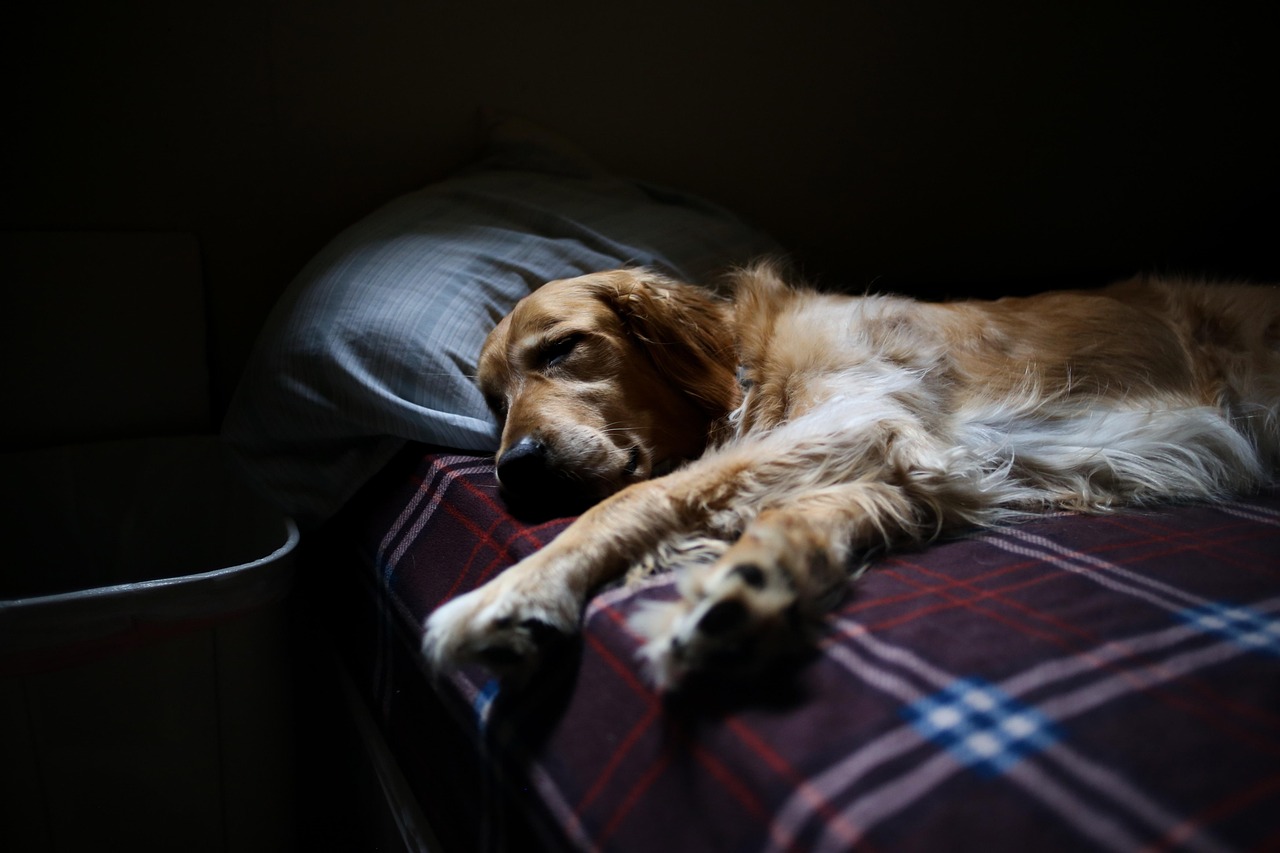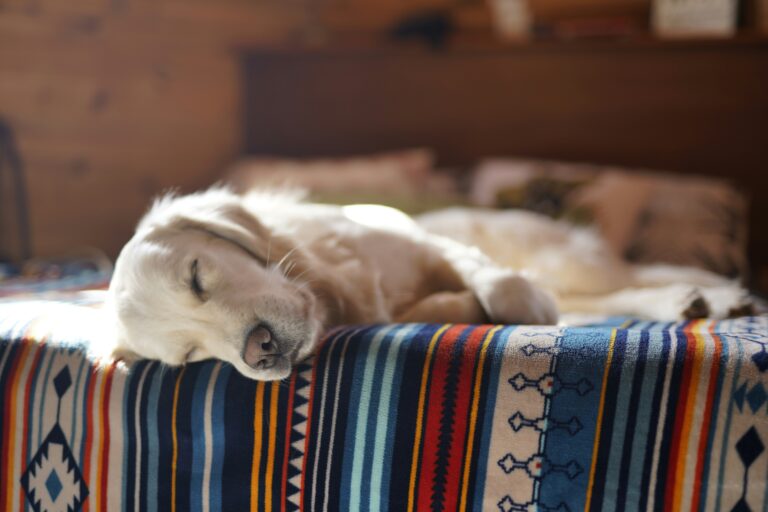Senior Dog Rest Area: Safe Setup Tips for Older Dogs (2025 Guide)

Caring for a senior dog means paying extra attention to their comfort, safety, and mobility. One of the most impactful things you can do is set up a senior dog rest area that meets their changing needs. Just like humans, older dogs face joint pain, slower movement, and increased sensitivity to temperature. A well-planned rest space can improve their quality of life and give you peace of mind.
This guide will walk you through bedding, placement, safety gear, and everyday adjustments to create the perfect rest area for senior dogs.
🛏️ Why a Senior Dog Rest Area Matters
As dogs age, they may develop arthritis, hip dysplasia, or general stiffness. Getting up onto couches or into beds becomes harder, and nighttime restlessness often increases. By designating a dedicated senior dog rest area, you’re giving your pup a consistent place to feel secure, sleep better, and avoid unnecessary strain.
👉 Dog Arthritis Sleep Tips: How to Help Your Senior Dog Rest Better at Night
🐾 Choosing the Right Bed
The foundation of any senior dog rest area is the bed. Orthopedic beds are especially helpful because they support joints and reduce pressure points.
What to Look For
- Memory Foam or Orthopedic Foam – contours to your dog’s body, relieving stress on hips, elbows, and shoulders.
- Low Entry Design – makes it easier for stiff or arthritic dogs to step in and out.
- Removable Covers – washable covers help keep the rest area fresh and hygienic.
- Non-Slip Bottoms – important if the bed is placed on tile or hardwood floors.
👉 Top 3 Best Orthopedic Dog Beds for Joint Pain Relief in 2025
🪜 Accessibility and Mobility Aids
Senior dogs often struggle to climb onto beds, couches, or even low platforms. Adding mobility aids ensures they don’t injure themselves while trying to rest near you.
- Dog Stairs or Ramps – lightweight and supportive solutions help dogs reach higher surfaces without straining joints.
- Non-Slip Rugs or Mats – reduce the risk of slipping when moving between bed and rest area.
- Clear Pathways – avoid clutter around the senior dog rest area to keep it safe for nighttime navigation.
👉 Best Dog Stairs for High Beds and Older Dogs
🌡️ Temperature Control for Comfort
Older dogs are more sensitive to cold and heat. A good rest area for senior dogs should adapt to seasonal changes.
Winter Rest Area Setup
- Heated pads or self-warming beds keep joints loose and muscles relaxed.
👉 Best Heated Dog Pads for Cold Winter Nights
Summer Rest Area Setup
- Cooling mats and fans prevent overheating, especially in breeds with thicker coats.
Place the senior dog rest area in a draft-free, quiet corner of the home, away from direct sun or chilly windows.
🧸 Adding Calming Comfort
Senior dogs can sometimes develop anxiety when left alone or separated from their owners. To make the rest area for older dogs more comforting:
- Add a soft blanket with your scent.
- Use calming toys or plushes that mimic warmth and heartbeat.
- Provide consistent access to fresh water close to the bed.
🩺 Safety Considerations
Think of the senior dog rest area as more than just a bed. It should be a safe zone that minimizes risks.
Safety Checklist
- No sharp furniture edges nearby.
- Keep cords and wires out of reach.
- Ensure lighting is adequate so they don’t stumble at night.
- Use baby gates to block off stairs or unsafe rooms.
💲 Cost vs Value of a Senior Dog Rest Area
Creating a senior dog rest area doesn’t have to be expensive. While orthopedic beds and heated pads may cost more upfront, they last longer and provide long-term health benefits. Compared to frequent vet visits from injuries or joint strain, the investment is worth it.
Remember, the goal isn’t luxury — it’s security and comfort.
❓ FAQ: Senior Dog Rest Areas
Do vets recommend creating a senior dog rest area?
Yes. Vets strongly suggest that older dogs have a consistent, supportive place to rest. Orthopedic beds and safety modifications can significantly reduce arthritis pain and improve quality of life.
Can multiple dogs share the same rest area?
Not always. While younger or smaller dogs may share, it’s best for senior dogs to have their own rest area to avoid being disturbed.
How often should I replace the bed?
Every 12–18 months depending on wear. If you notice sagging or lumps in the foam, it’s time for an upgrade.
🔗 Outbound Resource
For more expert insights, check out the American Kennel Club’s Senior Dog Care Guide. It covers health, diet, and daily care tips that pair perfectly with setting up a rest area for senior dogs.
✅ Final Thoughts
A thoughtfully prepared senior dog rest area gives your older pup independence, safety, and comfort during their golden years. From orthopedic bedding to mobility aids and climate control, each detail contributes to better rest and improved well-being.
💡 Pro Tip: Walk through your home from your dog’s perspective. If you notice any obstacles, cold drafts, or slippery spots, your dog likely does too. Adjusting those areas now can help prevent accidents and keep your best friend happy and secure.





